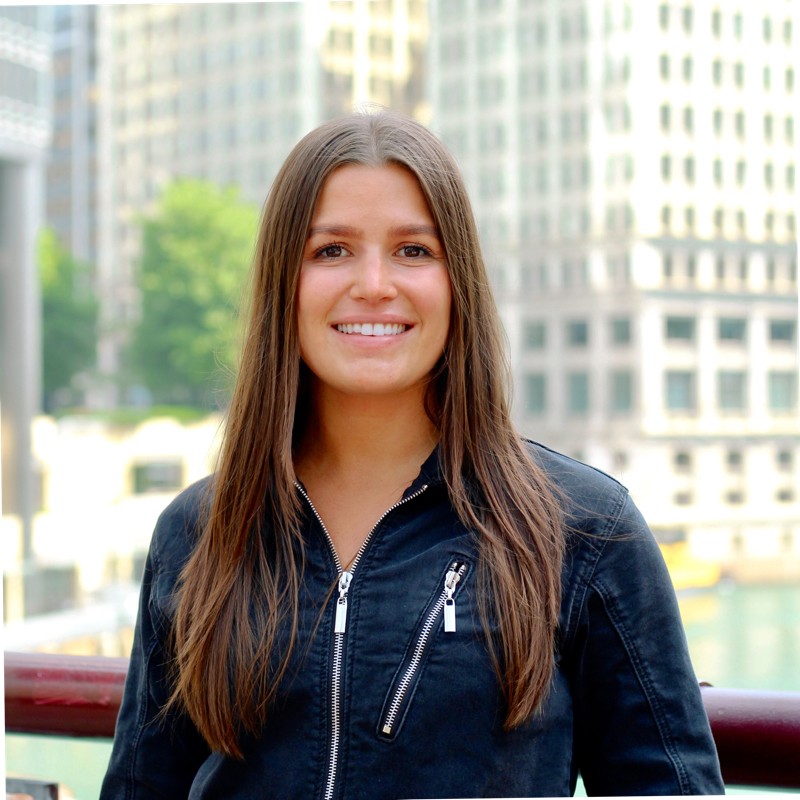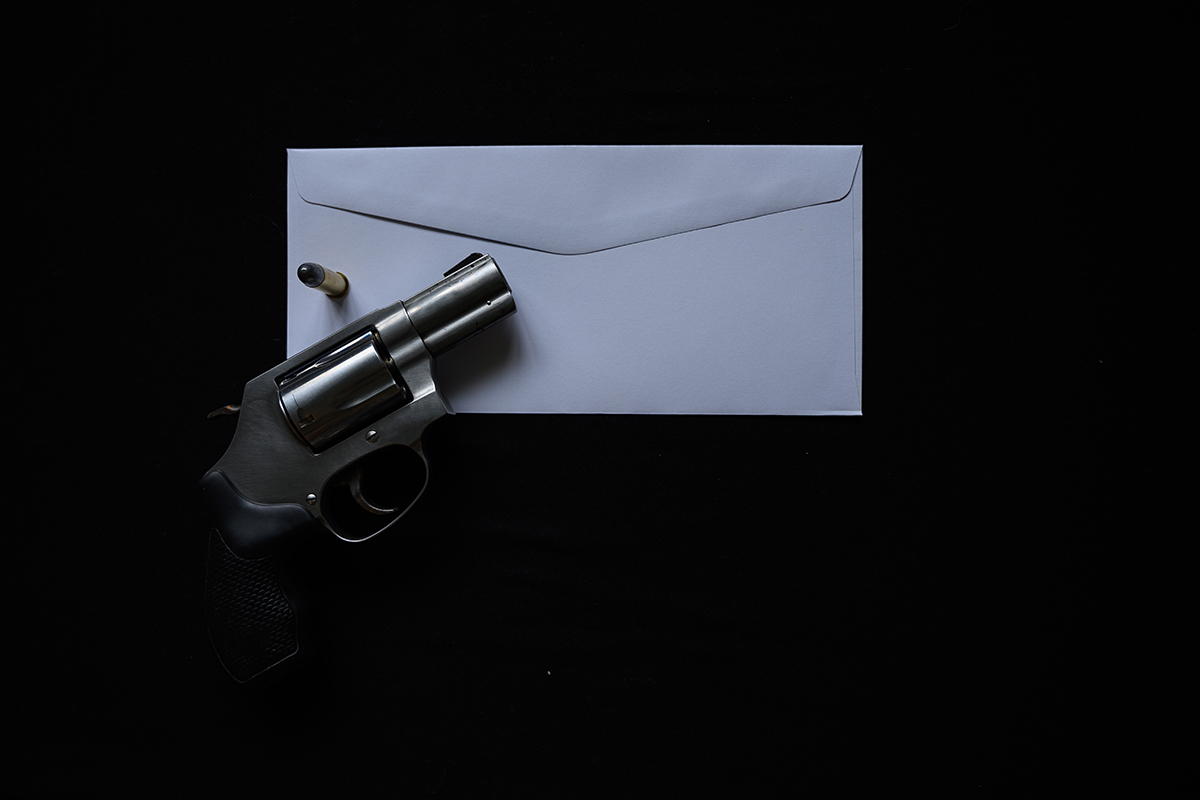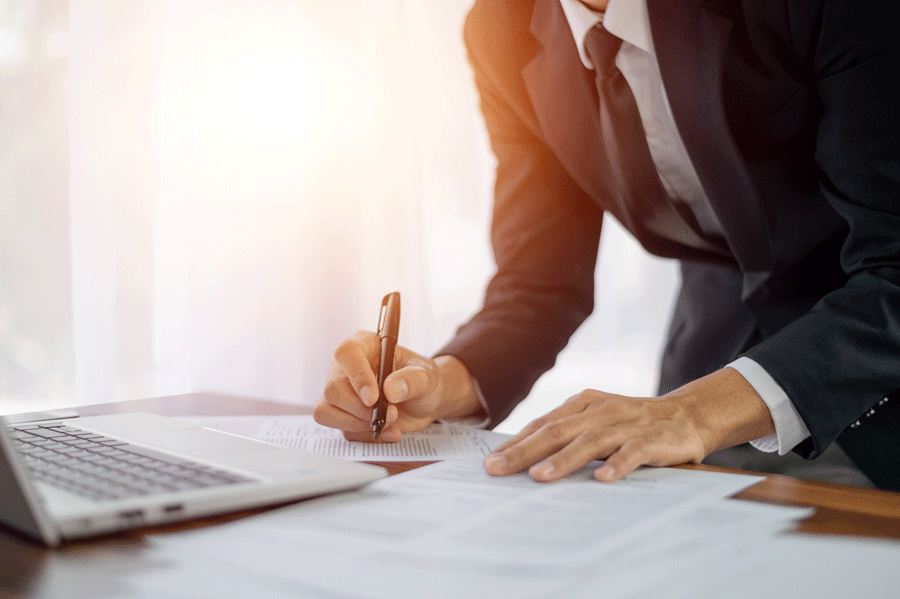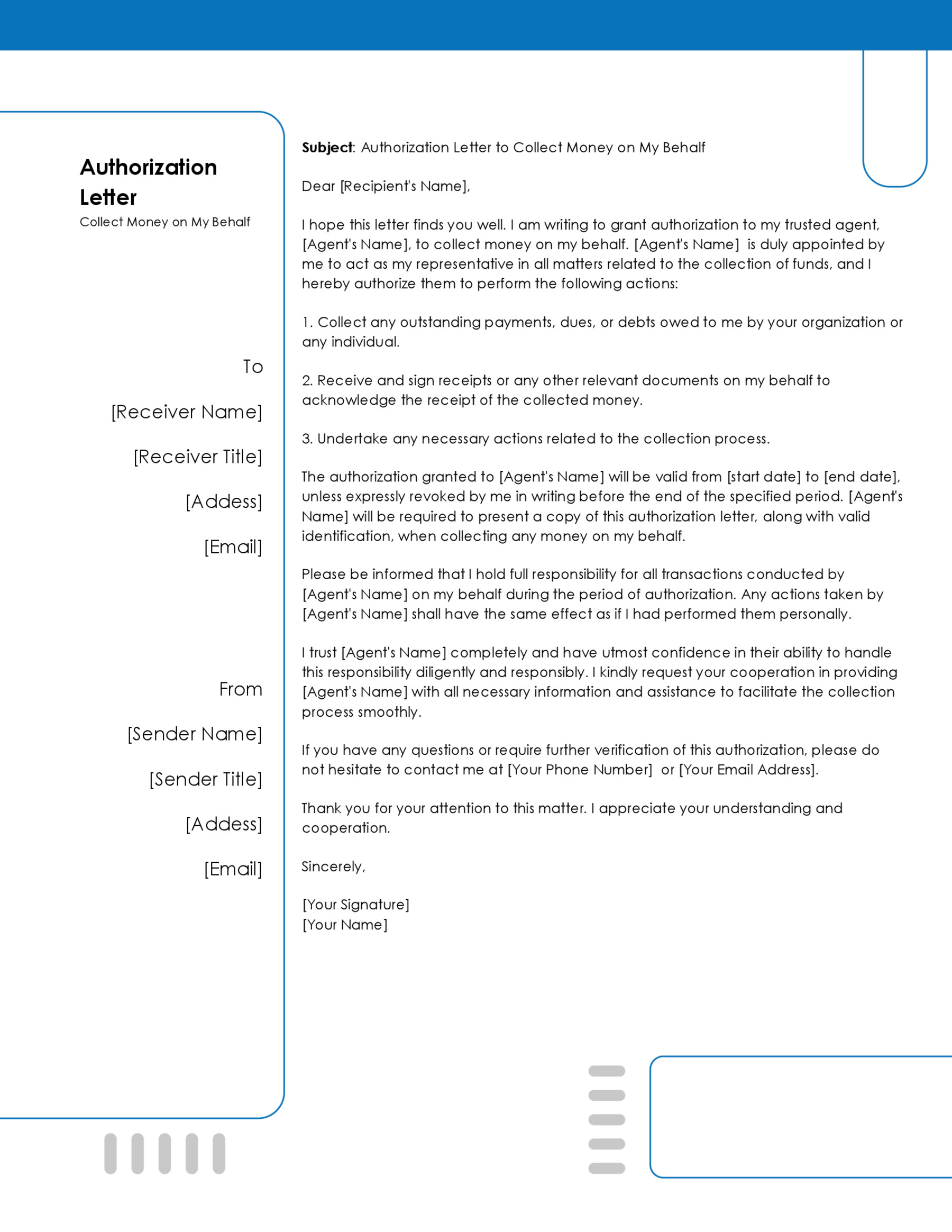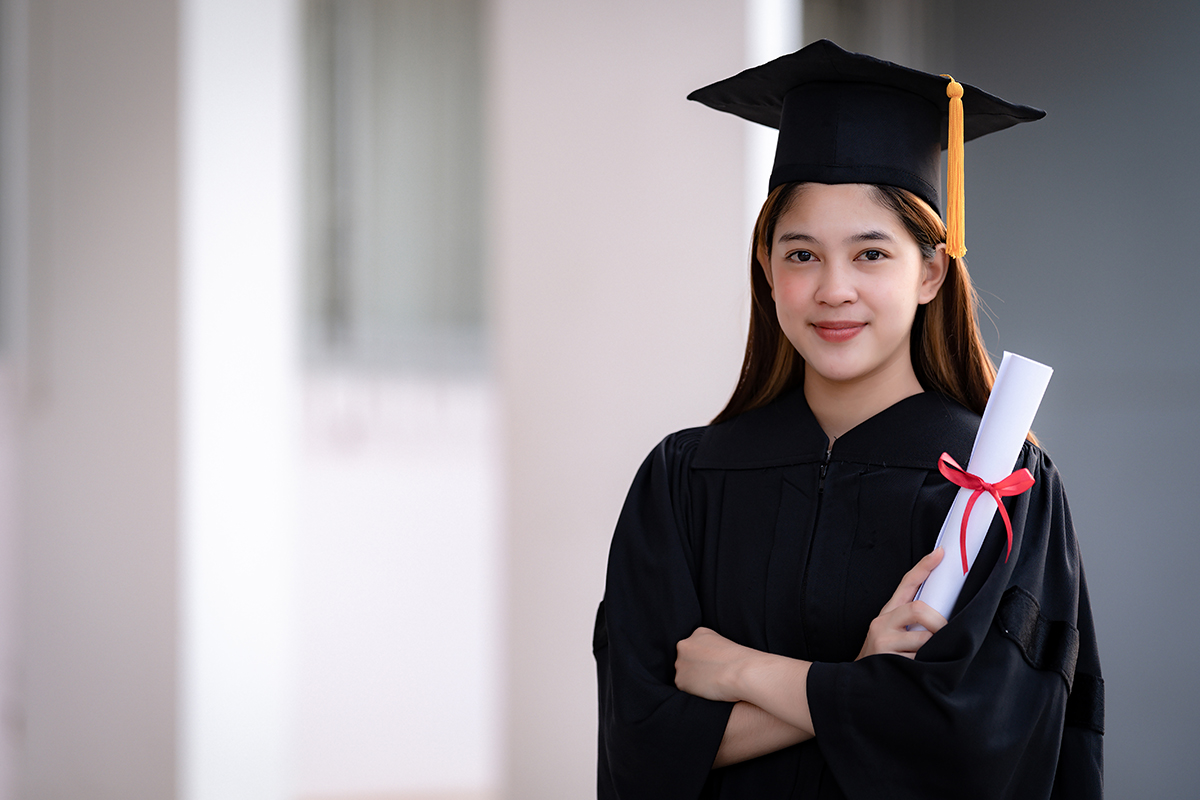A transmittal letter is an official letter that is written to accompany a document and clarify what the document being sent is about, establish the person who has sent it, and explain the actions required from the receiver of the document.
It is a type of cover letter which is written briefly and within context to avoid any confusion. For example, you can write a transmittal letter to inform the receiver that they need to sign the document. Transmittal letters can be used to accompany individual or company documents.
Transmittal letters are primarily written to accompany important business or company setup documents. The documents might contain sensitive details, important elements, technical information, or even urgent reports. In such cases, a transmittal letter must be written by the document’s sender to provide directives and explanations in relation to the document.
Letters of transmittal help the recipient of your document to know exactly what and why they have received it. This way, the recipient will understand the importance and even the urgency of your document. It is not always that your document needs a particular action. At the time, you should write and attach a transmittal letter to accompany a confusing document.
In other cases, when you write a transmittal letter, it will act as evidence of that document being sent from you to the intended recipient. Some of the specific purposes of a transmittal letter include:
- Providing instructions in regards to the sent document
- Helping the recipient of the document to understand it
- Restating all the important points in the document
- Informing the recipient of the sender of the document
- Highlighting any changes that were made in the document
- Instructing for follow up or required feedback from the recipient
- Establishing the purpose of the document
For example, you can attach a transmittal letter when sending a document to someone outside your organization, company, or team.
Transmittal Letter Templates
Transmittal letters are essential, especially when you send professional documents to people outside your team or organization. That means you always have to prepare a transmittal letter to provide your recipient with clarification. The fastest and easiest way to prepare a transmittal letter is by using transmittal letter templates.
Transmittal letter templates are already prepared letter structures with the complete format you may require for preparing a transmittal letter. With a template, you will be aware of what is needed in the letter and how best to communicate with your recipient. That means that a transmittal letter template makes the letter-writing process effective.
You can download our free, and easy-to-understand transmittal letter templates from below and easily customize them to suit your requirements.
Template
[Your full name] (Sender)
[Your full address]
Date]
Recipient’s name]
Recipient’s title]
Recipient’s organization]
Recipient’s address]
Dear (Mr. /Mrs. /Ms.) Recipient’s first and last name],
I am (introduce yourself in case the recipient does not know you). (Proceed with the introduction paragraph by explaining the purpose of the letter). The document contains (explain the contents of the document or report in brief).
The document is meant (explain the limitations of the document, if any and highlight the most important details that the recipient needs to know and understand). Also, the document (provide relevant information that will help the recipient understand why they are receiving the document). You will need to (mention any action required by them or follow-up expected from them like deadlines).
Thank you for (thank them for their time, feedback, cooperation or any other relevant action). (Include your contact information for communication purposes).
Regards,
(Signature)
(Your full name)


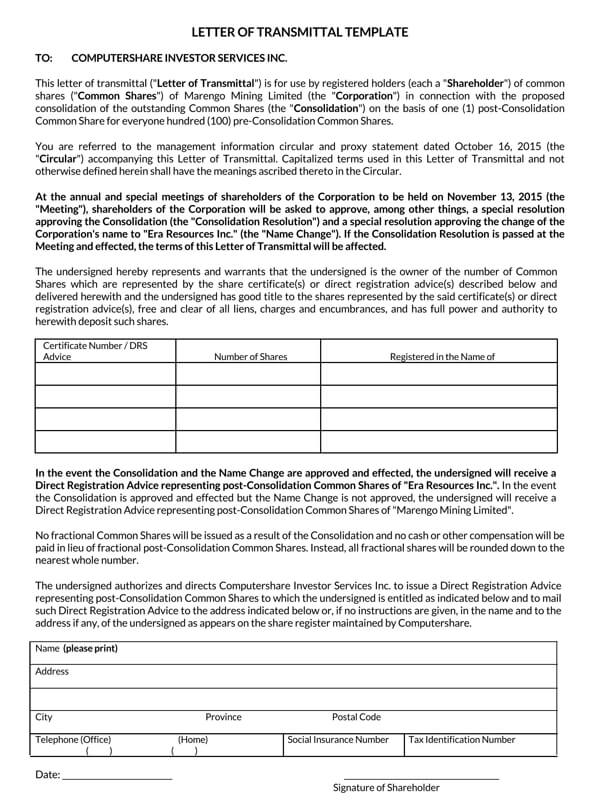
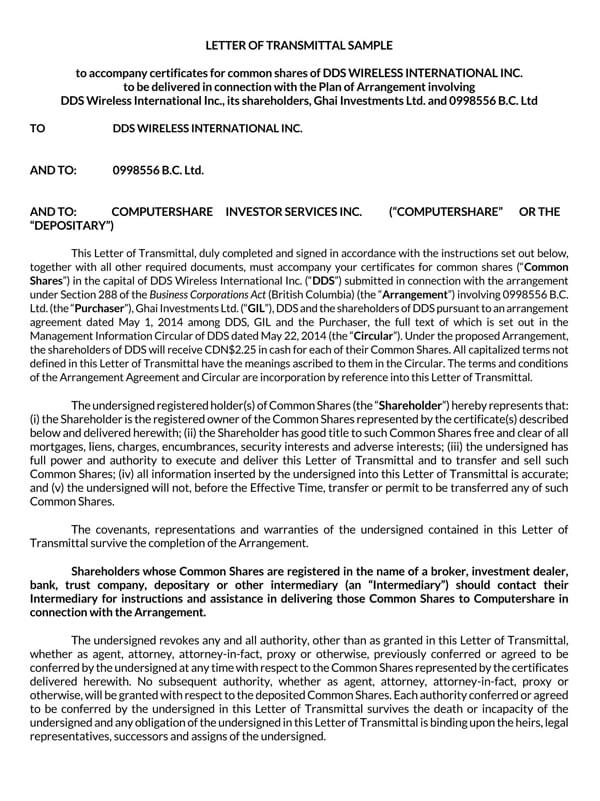
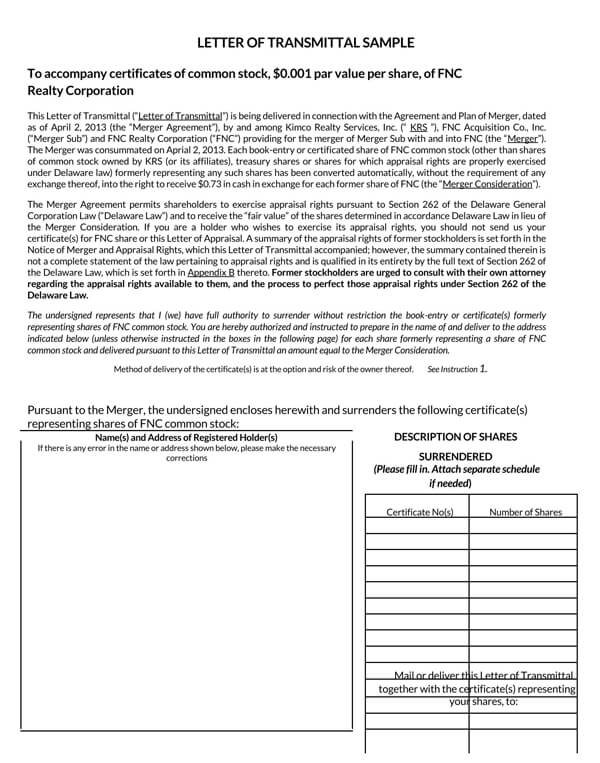
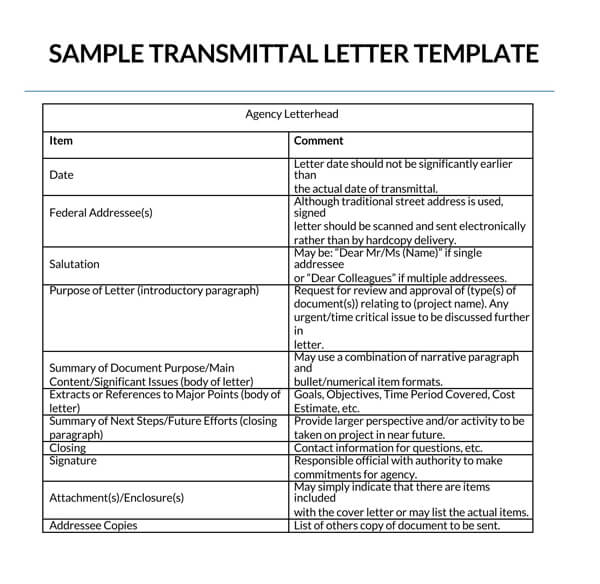
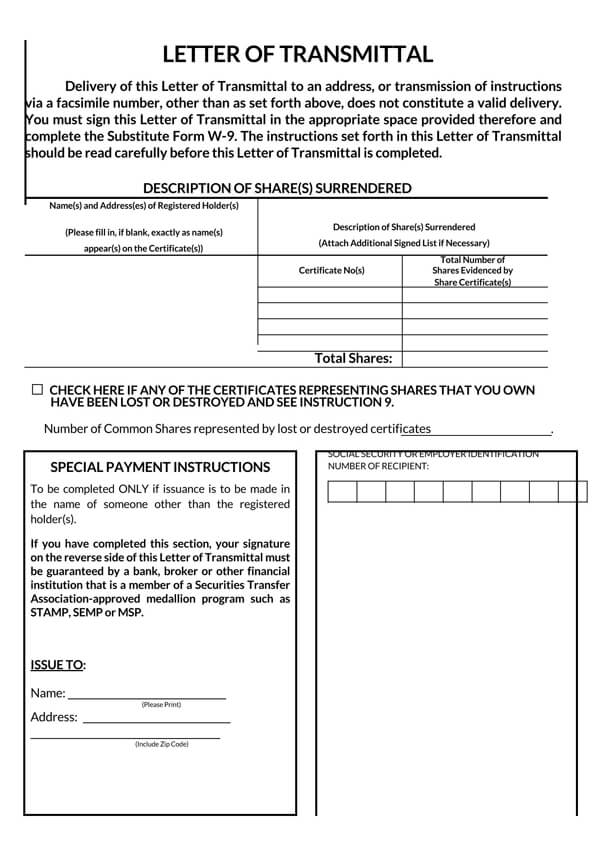
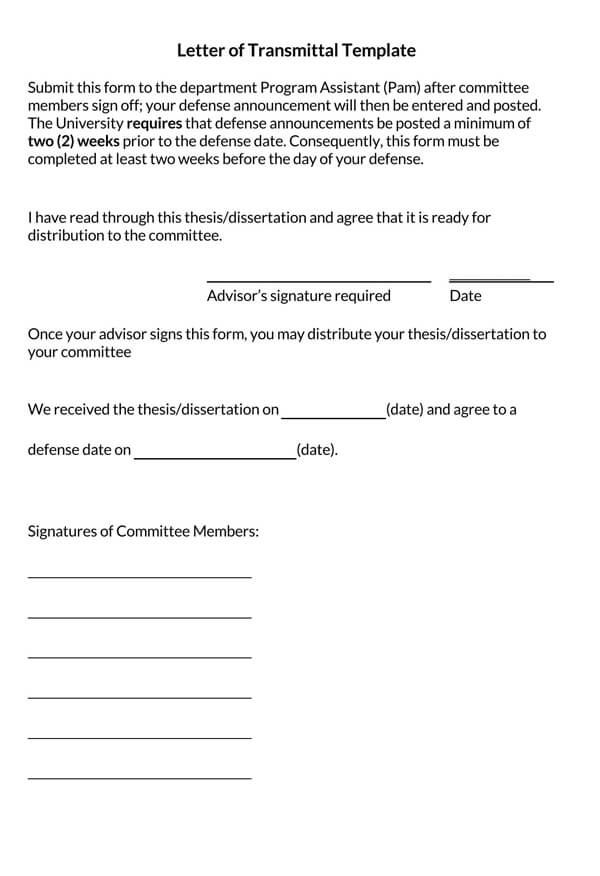
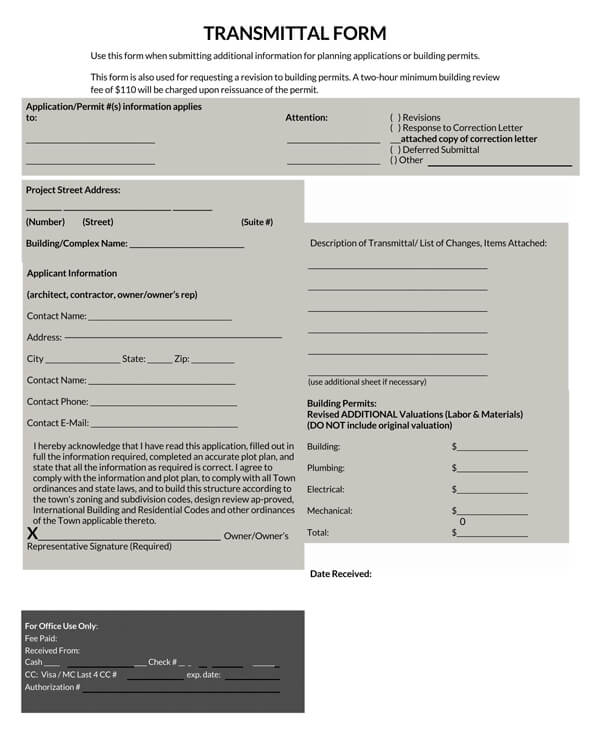








When Should You Use It?
There are scenarios that will require you to attach a transmittal letter when sending a document. This letter is important and must accompany all professional documents so as to provide clear communication from you, the sender, to the recipient of the document. You must always consider what you are sending, the recipient of the document, and what they know or not about the document when preparing a transmittal letter.
Here are some of the situations when you should use a transmittal letter:
Dealing with confidential information
A transmittal letter will help inform the recipient of the document that it is meant for only them before they open it up and read it. This way, you will help to protect confidential information from leaking out to unauthorized or unwanted parties. The recipient will also be more careful when handling these documents since they know that it contains private information.
Sharing financial reports
Based on the complexity of these reports, it is best that you include a transmittal letter when sending them. This way, you can provide the recipient with clear context and information about the financial reports they are about to review. Also, a transmittal letter attached to financial reports will offer clarification to the recipient.
Sending a proposal
In the case of proposals, you can write and send a transmittal letter to provide the recipient with a summary of the information in the proposal, to remind them why they are receiving the proposal, and to inform them of the need to send a draft of the proposal for evaluation or approval. Also, apart from describing the whole proposal in a few sentences, you can also use the letter to inform the recipient who you are and why you are sending them the proposal.
Sending technical documents
For technical documents, a transmittal letter is meant to explain the recipient of the document. At times technical documents are too complex to understand, and that is why it is important to attach a transmittal letter to help them understand. Always consider the recipient of your technical documents and try to explain any complex information to them before they even ask questions.
How to Format a Transmittal Letter
When writing a transmittal letter, you must keep in mind that it is a professional letter that must be written in a formal yet friendly way. Here are the guidelines that you should follow when formatting a transmittal letter. The header, greetings, body, and conclusion are essential sections that must be included in the transmittal letter.
Header
The first part of a transmittal letter is the letterhead or the header. The header should contain the sender’s (your) details, the date, and the recipient’s details. Start with your official name, company address, and your contact information before including the date. After one line, include the recipient’s information, including their name, title, company’s address, and any other contact information.
The contact details of either party may include their phone number and email address. This is the proper business etiquette for starting an official letter. It also provides a record of the parties involved in the transaction of a particular document. In the case of confidential documents, only the parties mentioned in the letter are allowed to read the document.
Greeting
The next step is to include a greeting before writing the content intended to be in your letter. The recipient of the document should be well addressed and saluted. For example, Dear (Mr. /Mrs. /Ms.) First and Last Name
Body
The body part of the transmittal letter is usually divided into three or four sections. The body paragraphs mainly contain the following information that helps the recipient understand what is in the document, what is expected from them, and who is sending them the document.
Purpose of the letter
You need to start by stating the purpose of the letter. You can do this by identifying the accompanying document and explaining the reason for sending it to the recipient. This way, the recipient will handle the sent document appropriately. You should also mention who you are in case the recipient does not know you. The purpose should be brief but clear.
Highlights of the attached document
The next piece of information is to give more details about the document. You should include an overview of all the important details or highlights found in the document that the recipient should be aware of. This section should also include the name of the document you have sent. For instance, this may include technical details or project information that needs to be explained to the document recipient. With this information, the recipient will be aware of what the document is all about and why they received it.
Limitations of the document
If the document is confidential or contains any private and sensitive information, the letter should include such information. You should explain to the recipient what they need to do when handling the document to protect the information.
Notify of any changes or concerns
The letter should also notify the recipient of any changes that have been made or any concerns regarding the document. You should highlight these changes and concerns clearly in the document.
Follow-up
In case there is a need for follow-up from the recipient, the letter should have all the information regarding the required follow-up. For example, you might require the recipient to contact you for more information or send the document to another person. This follow-up information must be included in the letter.
Clarify actions required from the recipient
In case there are any actions required from the recipient, the letter should mention them. This may include signing the documents or even replying to any request by a certain deadline. You need to be clear and exact about the instruction you write in your letter for the recipient.
Thank the recipient
The last paragraph should be about thanking the recipient for their time, cooperation, feedback, or other actions. This will make you sound polite and respectful.
Contact information
You also need to provide the recipient with your contact information. This way, they can reach out to you in case of any required follow-up, question, or clarification about the document. You can provide your phone number and/or your email address.
Closing
You should include a short closing paragraph at the end of the letter. This will entail final remarks regarding the document and thanking the recipient for their time, required action or cooperation. The last part is to sign off. For example, you can use “Sincerely” or “Regards” and your official name to mark the end of the letter.
Do’s and Don’ts
Apart from making the letter formal and concise, here are some other tips that you need to consider when writing a transmittal letter. These are the do’s and don’ts of writing a transmittal letter. With these tips, you can prepare an effective, formal, and complete transmittal letter to accompany your important documents.
These tips are essential and should be followed when writing a transmittal letter:
- Be clear: Ensure you use simple language to write a transmittal letter. That way, your recipient will easily understand the content that is in the document even before opening it. To ensure clarity of the letter, ensure you have a logical flow of ideas in the letter.
- Use a professional signature: If the letter is a physical copy, ensure you include your professional signature in ink to sign off the letter. For electronic versions, you should upload a digital version of your signature. It is an appropriate salutation required at the end of a formal letter, which means that a transmittal letter requires an official signature.
- Keep it light: Although a transmittal letter is formal, your tone should be more light and casual than other professional letters. Use a professional yet friendly tone regardless of the content in the document being accompanied by the letter.
- Use a standard business format: Ensure you use the standard business format of writing a professional letter. Your transmittal letter should be formal and official with clear content, regardless of what is contained in the document.
- Do check company policy: When writing a transmittal letter, you need to check the company policy of your recipient. For example, you need to know if someone needs to sign the document you are sending. You can also find out if there are any necessary steps that you need to follow when sending the document and letter to avoid any mistakes.
- Forgetting to check the company folder first: Always check the company folder first before writing the transmittal letter. This way, you are aware of the company’s policies and expected format for official letters. You will also be aware of the proper channels to use when sending the document. Some companies tend to produce a template that you should use when writing a transmittal letter.
- Don’t write a long letter: The document you are sending may already be long. Therefore, there is no need to write a long letter to explain what is in the document. Instead, your letter should be short and concise. The letter should contain only the critical information as it is meant to introduce the actual document.
- Don’t leave grammatical and spelling mistakes: Ensure you proofread your letter and edit out and grammatical and spelling mistakes. A transmittal letter is an official document. Sending the letter with grammatical and spelling mistakes will make you sound unprofessional. Instead, ensure that the information in the letter is clear and complete. Mistakes in the letter might also compromise your relationship with the individual or company.
- Not keeping an extra copy: Always remember to have an extra copy of the transmittal letter. It will act as a reference for future purposes in case there is an issue with the recipient or the document itself. For instance, the document can act as evidence that you sent that particular document to the recipient.
- Forgetting the document: Do not forget to send the transmittal letter together with the document. They should both be received together to avoid confusing the recipient of the letter.
Transmittal Letter Examples
Transmittal Letter Sample
[Your full name]
[Your full address]
Date]
Recipient’s name]
Recipient’s title]
Recipient’s organization]
Recipient’s address]
Dear (Mr. /Mrs. /Ms.) Recipient’s first and last name],
I am Estelle Johnson with the ABC Company Legal Services sending you the required legal document titled City Case X. The attached document is meant to provide more information regarding the case you are working on for the ABC Company regarding the assaulted employee. It contains details about when, where, and why the reported incident happened.
Based on its nature and the law, the document is confidential and should be read by only you and shared with the other three lawyers representing ABC Company in court. The document will provide you with information about all the witnesses, where you can find them and the reports they gave concerning the employee and the incident. Together with my team, I will be expecting a list of your own witnesses and incident report by the latest Friday next week.
Please review the document with all the urgency and confidentiality it deserves. Thank you for your time and cooperation this far throughout the case. You can reach me on (phone number) or (email address) between 9 am to 4 pm every day for any question or further information.
Regards,
(Signature)
(Your full name)

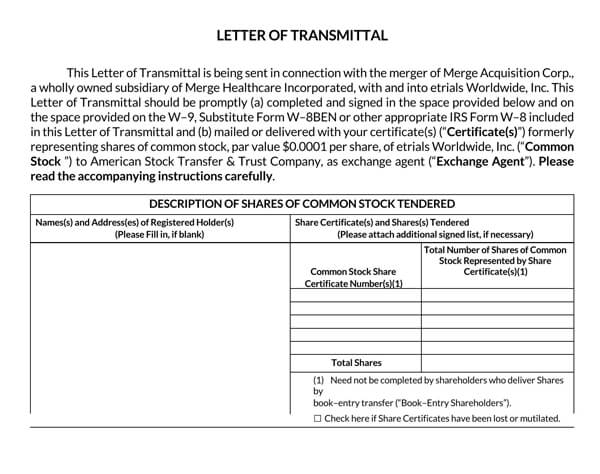
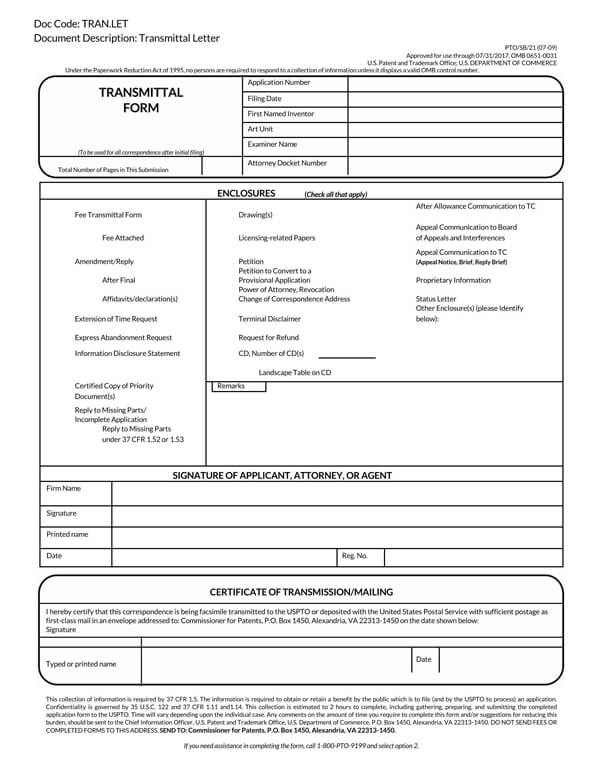
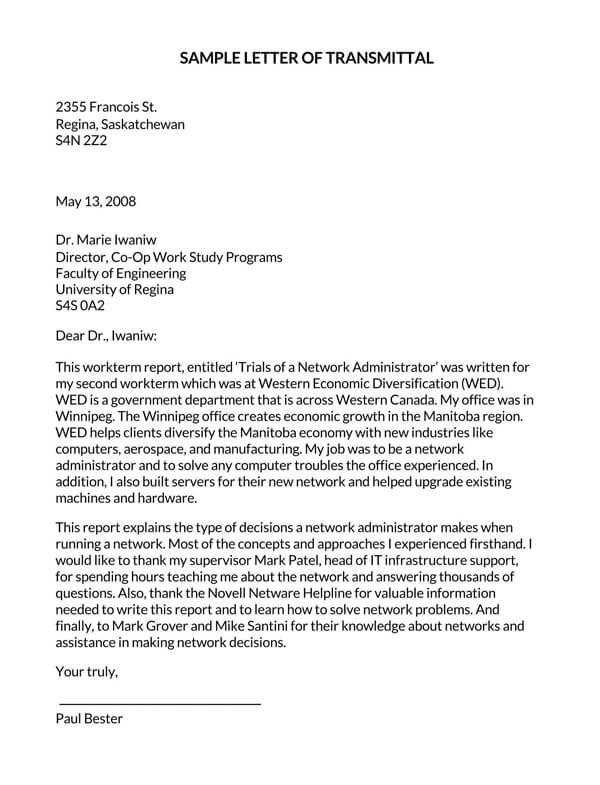


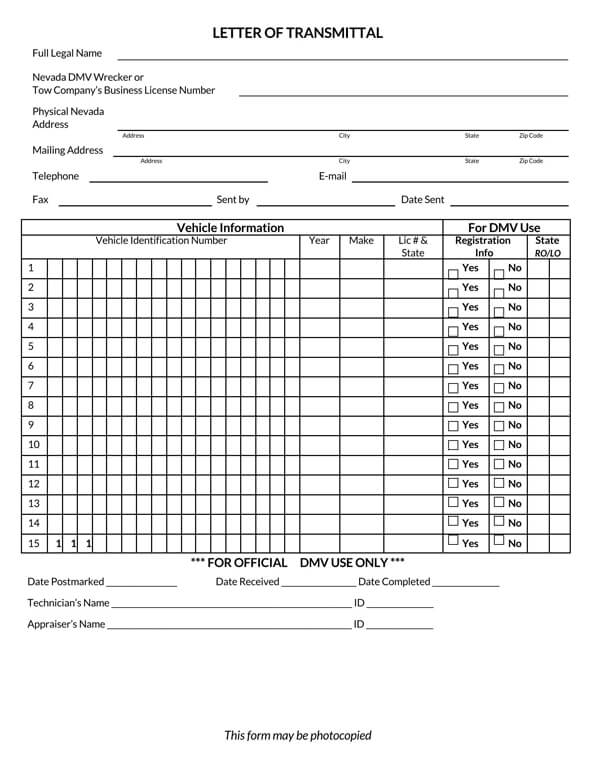
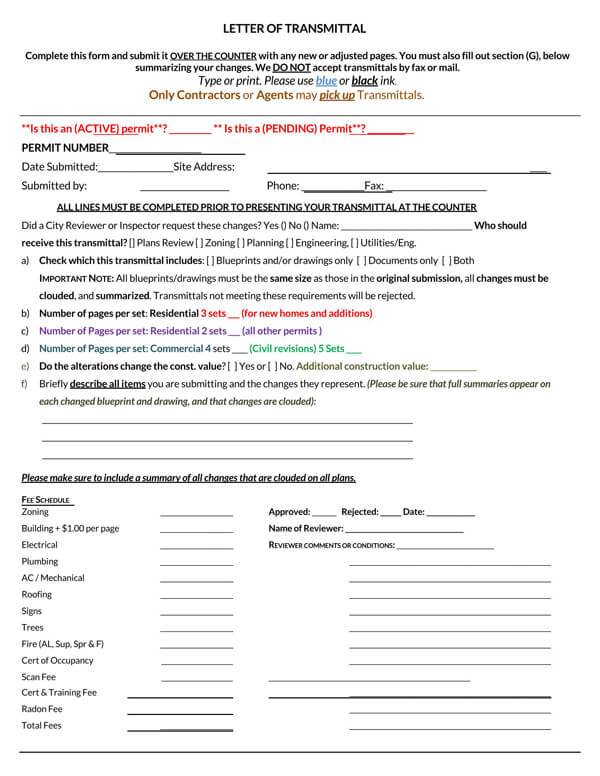
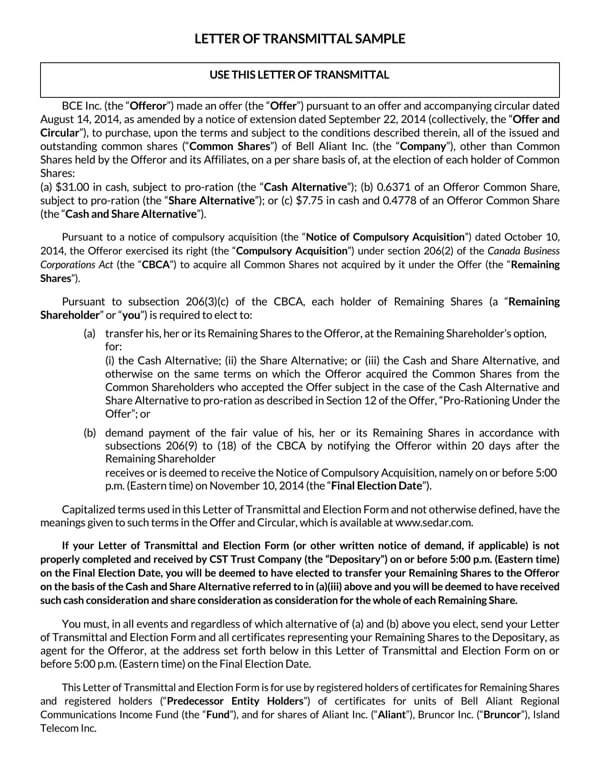

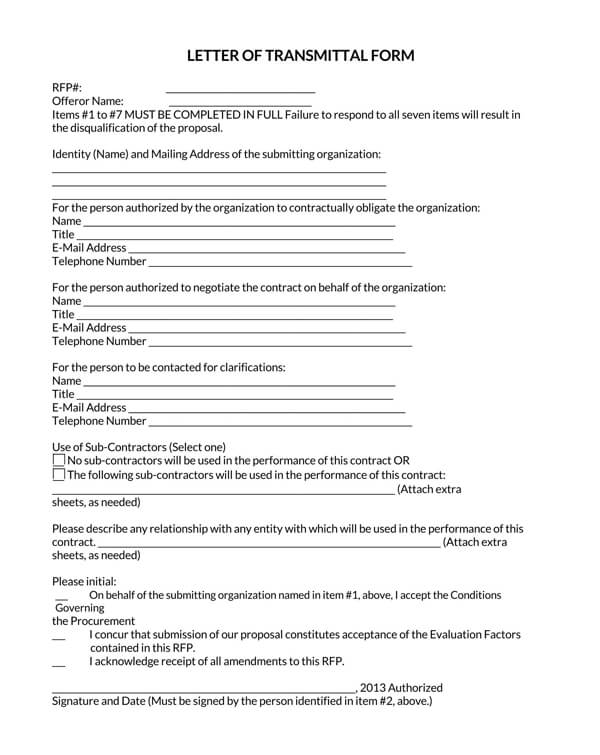
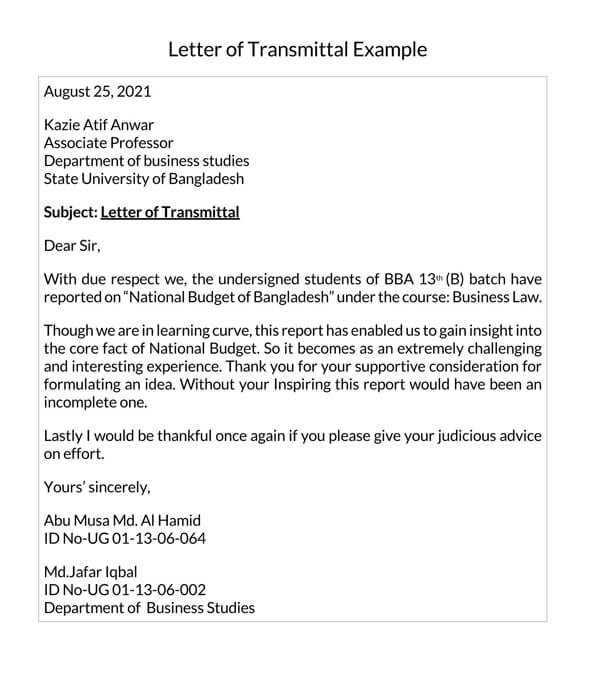
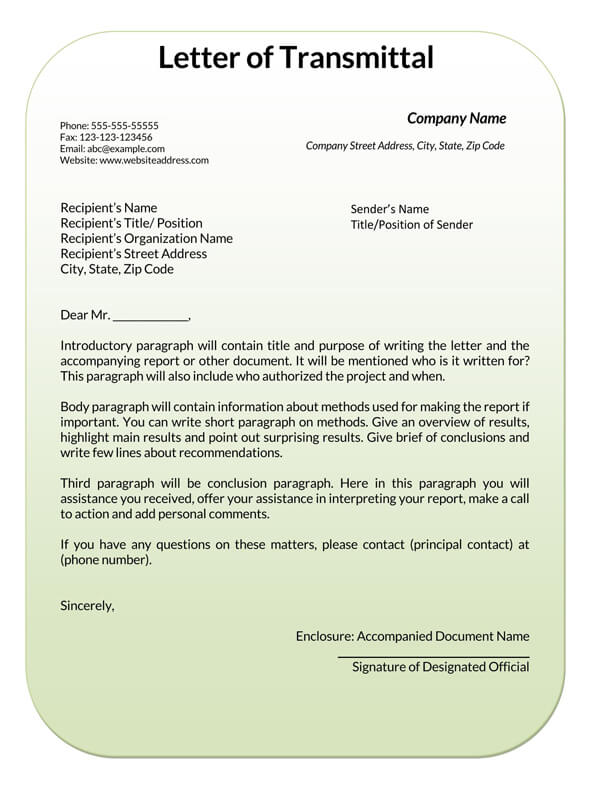
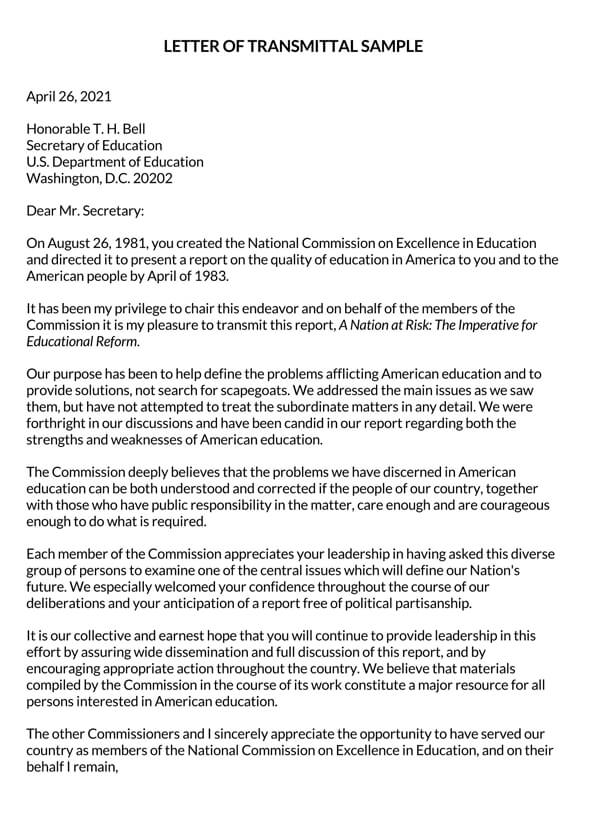
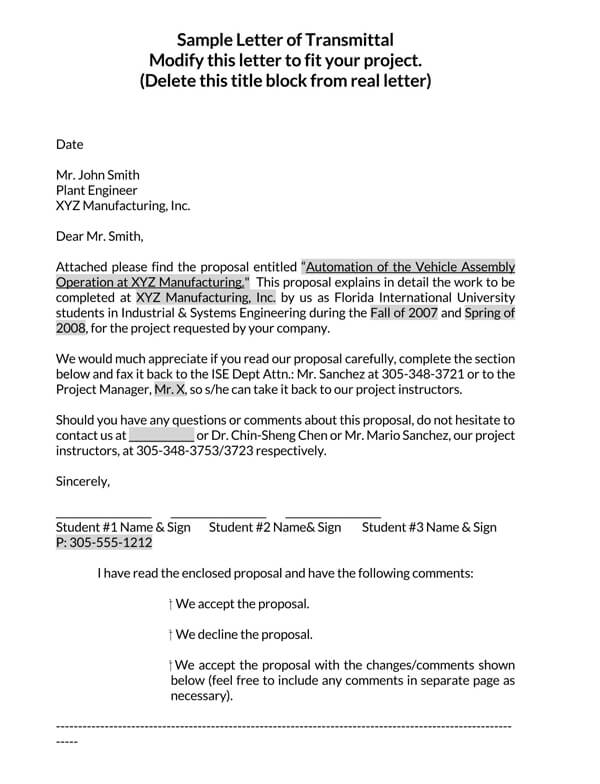
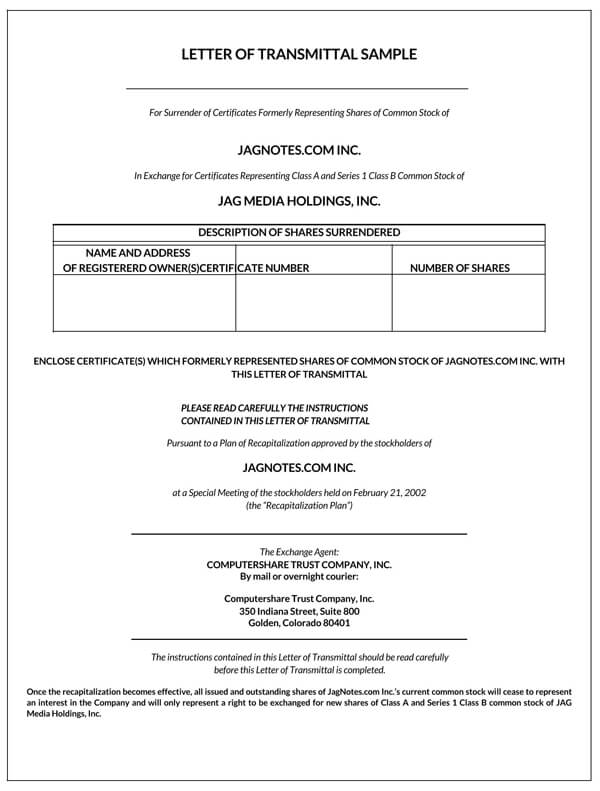
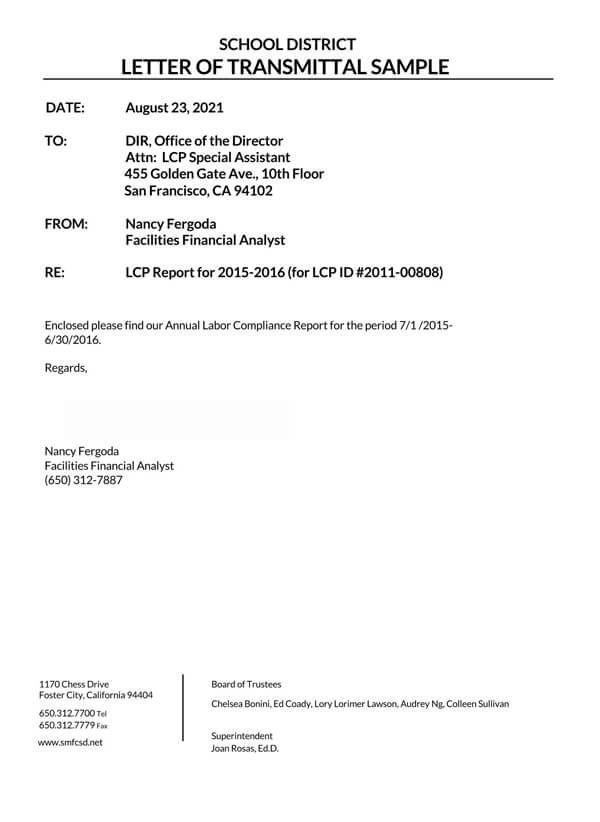
Final Thoughts
When sending important professional documents, it is necessary to accompany them with a transmittal letter. A transmittal letter acts like a cover letter that offers the recipient of the documents clarification of what is in the documents, who is sending the document, and why they are receiving the documents.
It is mostly attached to financial reports, technical documents, and confidential documents. Ensure that the letter is clear, within context, and precise. Use our transmittal letter templates and samples as a guide to prepare your own transmittal letter.
